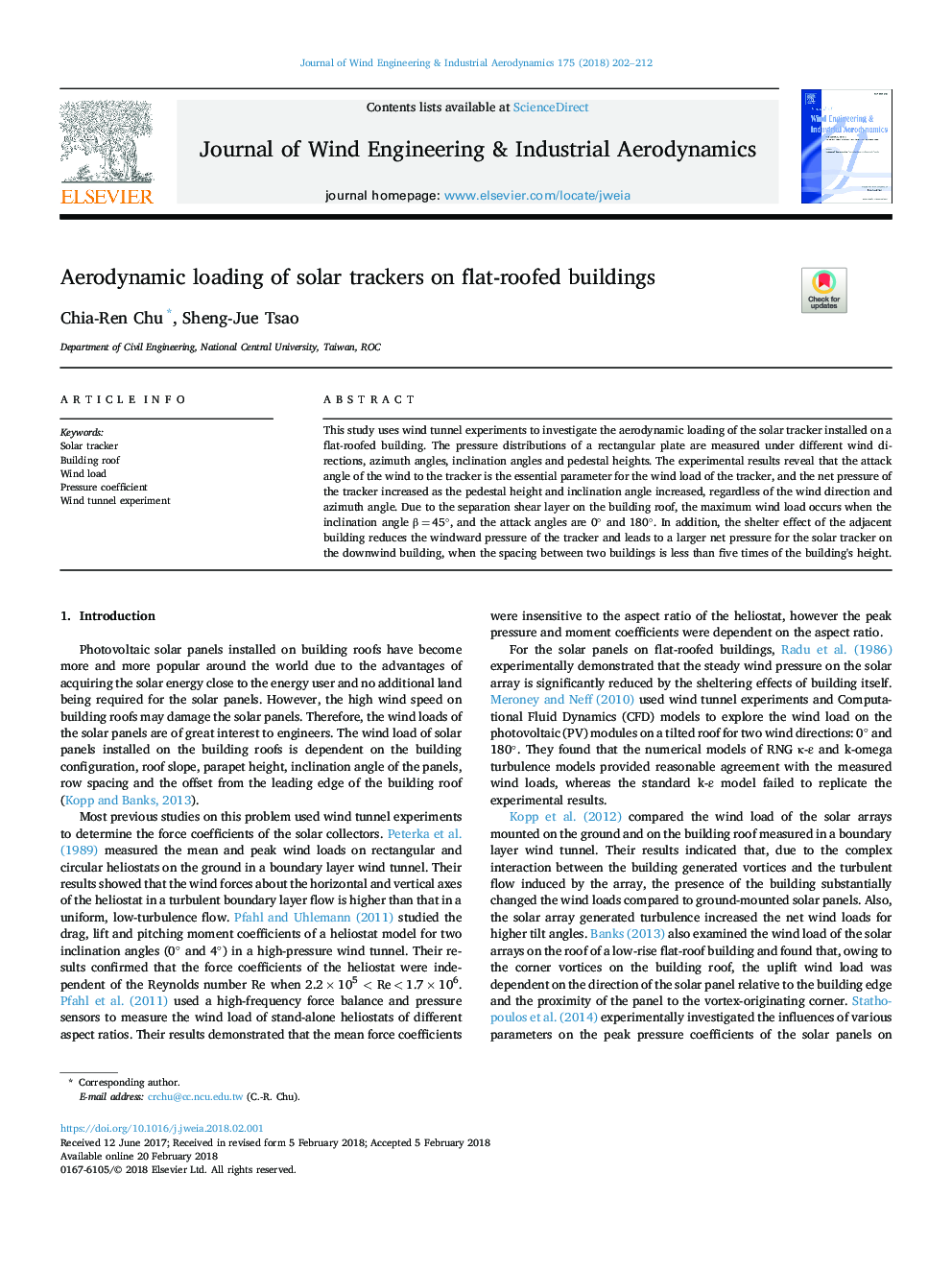| Article ID | Journal | Published Year | Pages | File Type |
|---|---|---|---|---|
| 6756972 | Journal of Wind Engineering and Industrial Aerodynamics | 2018 | 11 Pages |
Abstract
This study uses wind tunnel experiments to investigate the aerodynamic loading of the solar tracker installed on a flat-roofed building. The pressure distributions of a rectangular plate are measured under different wind directions, azimuth angles, inclination angles and pedestal heights. The experimental results reveal that the attack angle of the wind to the tracker is the essential parameter for the wind load of the tracker, and the net pressure of the tracker increased as the pedestal height and inclination angle increased, regardless of the wind direction and azimuth angle. Due to the separation shear layer on the building roof, the maximum wind load occurs when the inclination angle βâ¯=â¯45°, and the attack angles are 0° and 180°. In addition, the shelter effect of the adjacent building reduces the windward pressure of the tracker and leads to a larger net pressure for the solar tracker on the downwind building, when the spacing between two buildings is less than five times of the building's height.
Related Topics
Physical Sciences and Engineering
Energy
Renewable Energy, Sustainability and the Environment
Authors
Chia-Ren Chu, Sheng-Jue Tsao,
